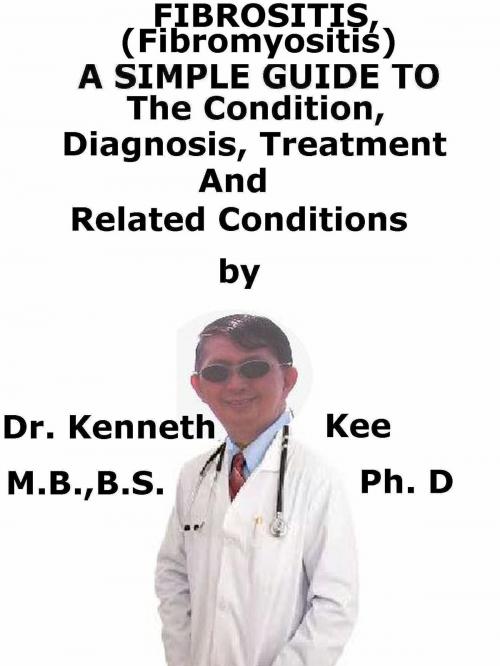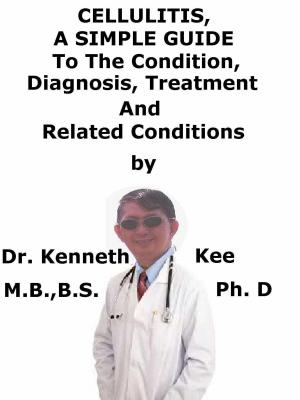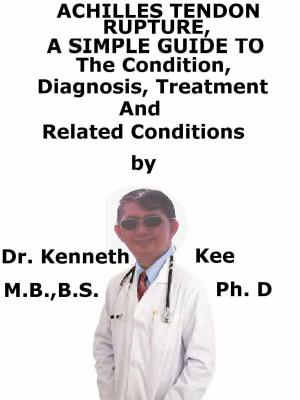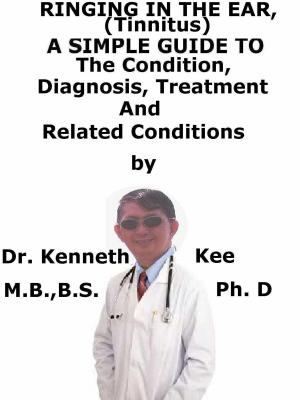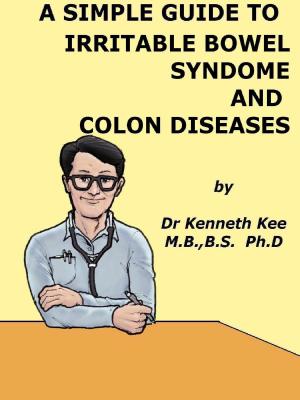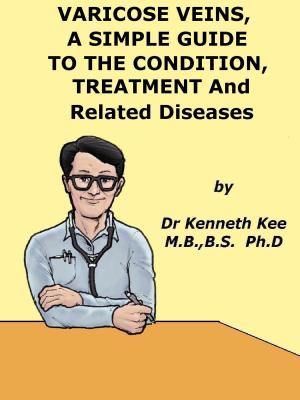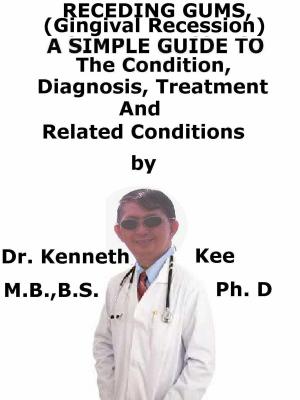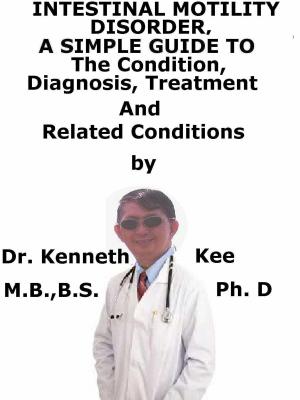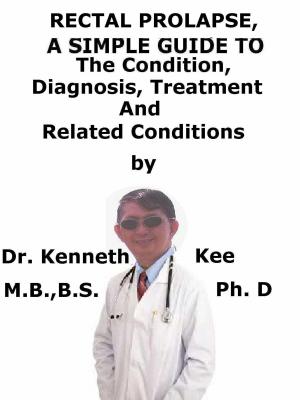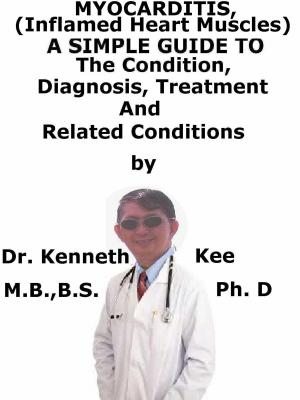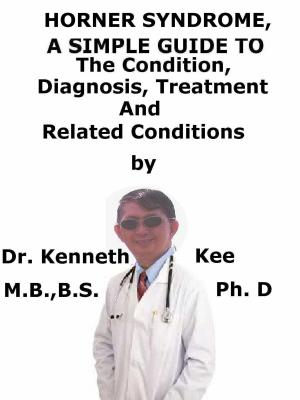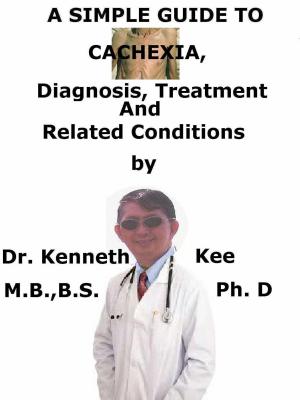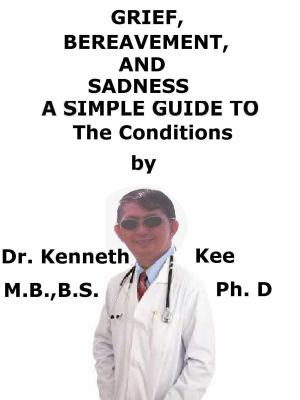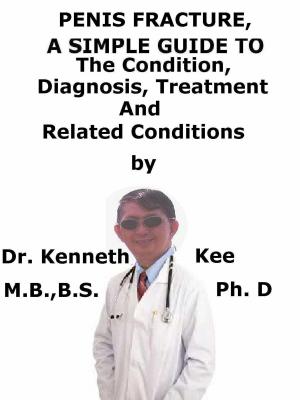Fibrositis, (Fibromyositis) A Simple Guide To The Condition, Diagnosis, Treatment And Related Conditions
Nonfiction, Health & Well Being, Health, Ailments & Diseases, Musculoskeletal, Medical, Specialties, Orthopedics| Author: | Kenneth Kee | ISBN: | 9781370476183 |
| Publisher: | Kenneth Kee | Publication: | June 23, 2017 |
| Imprint: | Smashwords Edition | Language: | English |
| Author: | Kenneth Kee |
| ISBN: | 9781370476183 |
| Publisher: | Kenneth Kee |
| Publication: | June 23, 2017 |
| Imprint: | Smashwords Edition |
| Language: | English |
Fibrositis is a frequent non-specific group of syndrome characterized by diffuse chronic pain, felt in and over muscle masses with focal trigger points or tender points in muscles, joints, tendons and ligaments.
It is no longer necessary to find tender trigger points during the exam to make a diagnosis.
Fibrositis is a frequent disorder in which a person has long-term pain that is spread throughout the body.
Fibrositis has also been linked to fatigue, sleep problems, headaches, depression and anxiety.
People with fibrositis may also have tenderness in the joints, muscles, tendons, and other soft tissues.
Fibrositis (FS) is typically featured by chronic widespread pain and allodynia (a heightened and painful response to pressure).
Fibrositis symptoms are not limited to pain resulting in the use of the alternative term fibromyalgia syndrome for the disorder.
Other symptoms are debilitating fatigue, sleep disturbance and joint stiffness.
Some people also complain of difficulty with swallowing, bowel and bladder anomalies, numbness and tingling, and poor cognitive function.
Fibrositis is often linked with psychiatric disorders such as depression and anxiety and stress-related disorders such as post-traumatic stress disorder.
Not all people with fibrositis have all linked symptoms.
The exact cause is not known but is believed to involve psychological, genetic, neurobiological and environmental factors
These same genes are also linked with other functional somatic syndromes and major depressive disorder.
Other causes are:
Genetic
Stress
Sleep disorders
Physical and emotional Trauma
Dopamine anomaly
Serotonin
Human growth hormone
Deposition disease
Infection
Chronic fatigue syndrome
The defining symptoms of fibrositis are chronic widespread pain, fatigue, sleep disturbance, and heightened pain in response to tactile pressure (allodynia).
Other symptoms may be tingling of the skin (paresthesias), prolonged muscle spasms, weakness in the limbs, nerve pain, muscle twitching, palpitations, and functional bowel disturbances.
Many patients have cognitive dysfunction
Treatment
There is no cure for fibrositis,
The purpose of treatment is to help alleviate pain and other symptoms, and to help a person cope with the symptoms.
The first type of treatment may require:
1. Physical therapy
2. Exercise and fitness program
3. Stress-relief methods, including light massage and relaxation techniques
If these treatments do not work, the doctor may also prescribe medicines:
The purpose of medication is to improve sleep and pain tolerance.
Medicine should be given together with exercise and behavior therapy.
1.Anti-seizure medicine
2.Analgesics
3.Muscle relaxants
4.Anti-anxiety, hypnotics
5.Antidepressant
6.Dopamine agonists
7.Central nervous system stimulants
8.Combination therapy
Non-drug treatment
1.Regular floatation tank sessions
2.Whirlpool therapy
Psychological therapies
1.Cognitive behavioral therapy
2.Neurofeedback
3.Biofeedback and self-management
Healthy lifestyle
1.Eat a well-balanced diet
2.Avoid caffeine
3.Practice good sleep routines to improve quality of sleep
4.Stop smoking in smokers.
5.Reduce weight in the obese
6.Exercise
7.Heat to painful areas
8.Physical therapy, massage or acupuncture
9. Sleep therapy with medicine or aids such as CPAP for sloeep apnea
Surgical treatment:
Surgery is only indicated in severe cases with
a.Limb-threatening ischemia
b.Lifestyle-restricting claudication
Experimental treatments
1.Milnacipran
2.Dextromethorphan
Alternative therapy
1.Massage
2.Accupressure
3.Nutritional supplements such as magnesium with malic acid and various anti-oxidants to protect the tissues
TABLE OF CONTENT
Introduction
Chapter 1 Fibrositis
Chapter 2 Causes
Chapter 3 Symptoms
Chapter 4 Diagnosis
Chapter 5 Treatment
Chapter 6 Prognosis
Chapter 7 Tendonitis
Chapter 8 Neuralgia
Epilogue
Fibrositis is a frequent non-specific group of syndrome characterized by diffuse chronic pain, felt in and over muscle masses with focal trigger points or tender points in muscles, joints, tendons and ligaments.
It is no longer necessary to find tender trigger points during the exam to make a diagnosis.
Fibrositis is a frequent disorder in which a person has long-term pain that is spread throughout the body.
Fibrositis has also been linked to fatigue, sleep problems, headaches, depression and anxiety.
People with fibrositis may also have tenderness in the joints, muscles, tendons, and other soft tissues.
Fibrositis (FS) is typically featured by chronic widespread pain and allodynia (a heightened and painful response to pressure).
Fibrositis symptoms are not limited to pain resulting in the use of the alternative term fibromyalgia syndrome for the disorder.
Other symptoms are debilitating fatigue, sleep disturbance and joint stiffness.
Some people also complain of difficulty with swallowing, bowel and bladder anomalies, numbness and tingling, and poor cognitive function.
Fibrositis is often linked with psychiatric disorders such as depression and anxiety and stress-related disorders such as post-traumatic stress disorder.
Not all people with fibrositis have all linked symptoms.
The exact cause is not known but is believed to involve psychological, genetic, neurobiological and environmental factors
These same genes are also linked with other functional somatic syndromes and major depressive disorder.
Other causes are:
Genetic
Stress
Sleep disorders
Physical and emotional Trauma
Dopamine anomaly
Serotonin
Human growth hormone
Deposition disease
Infection
Chronic fatigue syndrome
The defining symptoms of fibrositis are chronic widespread pain, fatigue, sleep disturbance, and heightened pain in response to tactile pressure (allodynia).
Other symptoms may be tingling of the skin (paresthesias), prolonged muscle spasms, weakness in the limbs, nerve pain, muscle twitching, palpitations, and functional bowel disturbances.
Many patients have cognitive dysfunction
Treatment
There is no cure for fibrositis,
The purpose of treatment is to help alleviate pain and other symptoms, and to help a person cope with the symptoms.
The first type of treatment may require:
1. Physical therapy
2. Exercise and fitness program
3. Stress-relief methods, including light massage and relaxation techniques
If these treatments do not work, the doctor may also prescribe medicines:
The purpose of medication is to improve sleep and pain tolerance.
Medicine should be given together with exercise and behavior therapy.
1.Anti-seizure medicine
2.Analgesics
3.Muscle relaxants
4.Anti-anxiety, hypnotics
5.Antidepressant
6.Dopamine agonists
7.Central nervous system stimulants
8.Combination therapy
Non-drug treatment
1.Regular floatation tank sessions
2.Whirlpool therapy
Psychological therapies
1.Cognitive behavioral therapy
2.Neurofeedback
3.Biofeedback and self-management
Healthy lifestyle
1.Eat a well-balanced diet
2.Avoid caffeine
3.Practice good sleep routines to improve quality of sleep
4.Stop smoking in smokers.
5.Reduce weight in the obese
6.Exercise
7.Heat to painful areas
8.Physical therapy, massage or acupuncture
9. Sleep therapy with medicine or aids such as CPAP for sloeep apnea
Surgical treatment:
Surgery is only indicated in severe cases with
a.Limb-threatening ischemia
b.Lifestyle-restricting claudication
Experimental treatments
1.Milnacipran
2.Dextromethorphan
Alternative therapy
1.Massage
2.Accupressure
3.Nutritional supplements such as magnesium with malic acid and various anti-oxidants to protect the tissues
TABLE OF CONTENT
Introduction
Chapter 1 Fibrositis
Chapter 2 Causes
Chapter 3 Symptoms
Chapter 4 Diagnosis
Chapter 5 Treatment
Chapter 6 Prognosis
Chapter 7 Tendonitis
Chapter 8 Neuralgia
Epilogue
